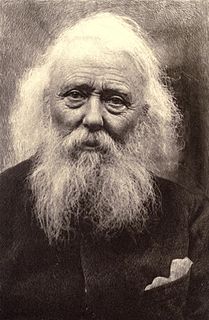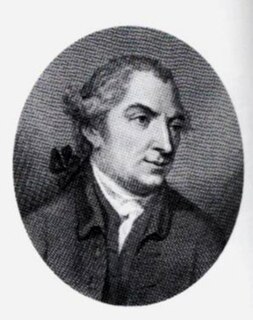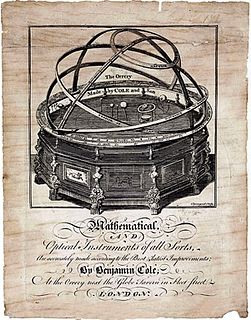
Catherine Greenaway was an English Victorian artist and writer, known for her children's book illustrations. She received her education in graphic design and art between 1858 and 1871 from South Kensington School of Art and the Royal Female School of Art, and the Slade School of Fine Art. She began her career designing for the burgeoning holiday card market, producing Christmas and Valentine's cards. In 1879 wood-block engraver and printer, Edmund Evans, printed Under the Window, an instant best-seller, which established her reputation. Her collaboration with Evans continued throughout the 1880s and 1890s.

John Boydell was a British publisher noted for his reproductions of engravings. He helped alter the trade imbalance between Britain and France in engravings and initiated a British tradition in the art form. A former engraver himself, Boydell promoted the interests of artists as well as patrons and as a result his business prospered.

John Cadbury was a Quaker and English proprietor and founder of Cadbury, the chocolate business based in Birmingham, England.

Christophe Plantin was a French Renaissance humanist and book printer and publisher who resided and worked in Antwerp.

The Gentleman's Magazine was a monthly magazine founded in London, England, by Edward Cave in January 1731. It ran uninterrupted for almost 200 years, until 1922. It was the first to use the term magazine for a periodical. Samuel Johnson's first regular employment as a writer was with The Gentleman's Magazine.

William James Linton was an English-born American wood-engraver, landscape painter, political reformer and author of memoirs, novels, poetry and non-fiction.

Wood engraving is a printmaking technique, in which an artist works an image or matrix of images into a block of wood. Functionally a variety of woodcut, it uses relief printing, where the artist applies ink to the face of the block and prints using relatively low pressure. By contrast, ordinary engraving, like etching, uses a metal plate for the matrix, and is printed by the intaglio method, where the ink fills the valleys, the removed areas. As a result, wood engravings deteriorate less quickly than copper-plate engravings, and have a distinctive white-on-black character.
Collins Bartholomew, formerly John Bartholomew and Son, is a long-established map publishing company originally based in Edinburgh, Scotland. It is currently a subsidiary of HarperCollins.

Ince and Mayhew were a partnership of furniture designers, upholsterers and cabinetmakers, founded and run by William Ince (1737–1804) and John Mayhew (1736–1811) in London, from 1759 to 1803; Mayhew continued alone in business until 1809. Their premises were located in Marshall Street but were listed in London directories in Broad Street, Soho, 1763–83, and in Marshall Street, Carnaby Market, 1783–1809. The partnership's volume of engraved designs, The Universal System of Household Furniture, dedicated to the Duke of Marlborough, was issued in imitative rivalry with Thomas Chippendale; Ince, who was a subscriber to the first edition of Chippendale's Director, was chiefly responsible for the designs, while Mayhew contributed the greater part of the partnership's capital, kept the accounts, and was in closer contact with the firm's clientele among the nobility and gentry. The name of the firm originally appears to have been "Mayhew and Ince", but on the title page of The Universal System the names are reversed, suggesting that Ince was the more extensive contributor.
John Barrow was an English mathematician, naval historian and lexicographer. His geographical dictionary first appeared in 1756.

James Basire, also known as James Basire Sr., was a British engraver. He is the most significant of a family of engravers, and noted for his apprenticing of the young William Blake.

Edmund Evans was an English wood-engraver and colour printer during the Victorian era. Evans specialized in full-colour printing, which, in part because of his work, became popular in the mid-19th century. He employed and collaborated with illustrators such as Walter Crane, Randolph Caldecott, Kate Greenaway and Richard Doyle to produce what are now considered to be classic children's books. Although little is known about his life, he wrote a short autobiography before his death in 1905 in which he described his life as a printer in Victorian London.

Benjamin Cole (1695–1766) was an English surveyor, cartographer, instrument maker, engraver and bookbinder living in Oxford. His sons William and Benjamin were also instrument makers in London, while another son, Maximilian, was an engraver in Oxford.
The Cadbury family is a prominent British family of Quaker industrialists descending from Richard Tapper Cadbury.

John Matthew Patrick Hutton, Baron Hutton of Furness, is a British Labour politician who was Member of Parliament (MP) for Barrow and Furness from 1992 to 2010 and served in a number of Cabinet offices, including Defence Secretary and Business Secretary. He is a former Chairman of the Royal United Services Institute.

Thomas Annan (1829–1887) was a Scottish photographer, notable for being the first to record the bad housing conditions of the poor. Born in Dairsie, Fife he was one of seven children of John Annan, a flax spinner.

Richard Bentley was a 19th-century English publisher born into a publishing family. He started a firm with his brother in 1819. Ten years later, he went into partnership with the publisher Henry Colburn. Although the business was often successful, publishing the famous "Standard Novels" series, they ended their partnership in acrimony three years later. Bentley continued alone profitably in the 1830s and early 1840s, establishing the well-known periodical Bentley's Miscellany. However, the periodical went into decline after its editor, Charles Dickens, left. Bentley's business started to falter after 1843 and he sold many of his copyrights. Only 15 years later did it begin to recover.

Col. John Tayloe I was one of the richest plantation owners and businessmen in Virginia for his generation. Considered to be the chief architect of the family fortune, he was known as the "Hon. Colonel of the Old House". The Tayloe family of Richmond County, including John Tayloe I, his son, John Tayloe II, and grandson, John Tayloe III, exemplified gentry entrepreneurship.

Joseph Swain was an English wood-engraver. He is best known from his engravings in Punch magazine of cartoons by Sir John Tenniel.
Joseph Hogarth (1801-1879) was a leading British fine art print publisher, print seller, frame maker and art restorer. He operated from various locations in central London in the middle decades of the nineteenth century. He was working in the field by 1826 and the business continued to operate till 1890, by which time it was under the direction of his two sons.
















